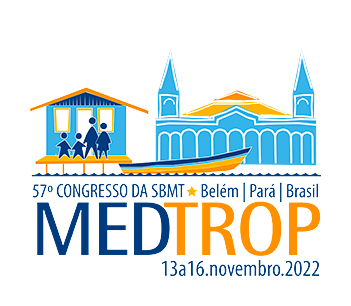Dados do Trabalho
Título
Human T-Lymphotropic Virus-1/2 Infection in Central Brazil Prisons: A Multicenter Study
Introdução
Human T-lymphotropic virus (HTLV) infection is endemic in some group populations. Prisoners are at high risk of acquiring HTLV infection mainly due to the environment of closed penal institutions, socioeconomic conditions, and risk behaviors.
Objetivo(s)
This study aimed to investigate the prevalence, the occurrence of new cases of HTLV infection after a 1-year follow-up, and circulating subtypes of HTLV-1 among prisoners from twelve closed prisons in Mato Grosso do Sul state, Central Brazil.
Material e Métodos
A total of 1,507 prisoners were randomly enrolled in the cross-sectional study. Out of the 1,507 participants, 1,000 prisoners, susceptible to HTLV infection, were included in the prospective cohort study. The selected serum samples were screened by an enzyme-linked immunosorbent assay (ELISA) commercial kit for the presence of anti-HTLV-1/2 antibodies, following the manufacturer’s instructions. Positive samples were repeatedly tested and confirmed by HTLV-1/2 Western Blot (WB) assay. Reactive samples (anti-HTLV-1/2 positive) were also confirmed by nested polymerase chain reaction (PCR) and the HTLV-1 5′LTR amplicons were sequenced by Sanger’s method. The isolates from the HTLV-1 5′LTR region were subjected to an analysis in the BLAST (Basic Local Alignment Search Tool). This study was approved by the Federal University of Mato Grosso do Sul Ethics Committee on Human Research, under protocol number 1.250.132, CAAE: 49361715.8.0000.0021.
Resultados e Conclusão
In the cross-sectional study, serological evidence of HTLV infection was 0.4% (CI 95%: 0.1-0.7). Three samples were positive for HTLV-1, two samples were positive for HTLV-2, and 1 sample was indeterminate by the Western blot method. No deficits were observed in the general and neurological examination after a clinical assessment specialist. The presence of HTLV proviral DNA was detected in all positive samples by amplification of the HTLV tax gene through nested-PCR. Phylogenetic analysis showed that HTLV-1 samples belonged to the Cosmopolitan subtype Transcontinental subgroup. From a cohort of 1,000 individuals, no new case of HTLV infection was detected. Although the prevalence rate of HTLV infection found in this study was similar to that observed in the Brazilian general population, the lack of access to preventive interventions and harm reduction measures all contribute to increasing the risk of HTLV transmission and acquisition among this key and vulnerable population.
Palavras-chave
HTLV, prevalence, prisoners, high-risk population, Brazil.
Área
Eixo 10 | Outras infecções causadas por vírus
Categoria
NÃO desejo concorrer ao Prêmio Jovem Pesquisador
Autores
Larissa Melo Bandeira, Marco Antonio Moreira Puga, Julio Croda, Maurício Antonio Pompílio, Carolina Amianti, Grazielli Rocha de Rezende, Ana Rita Coimbra Motta-Castro
